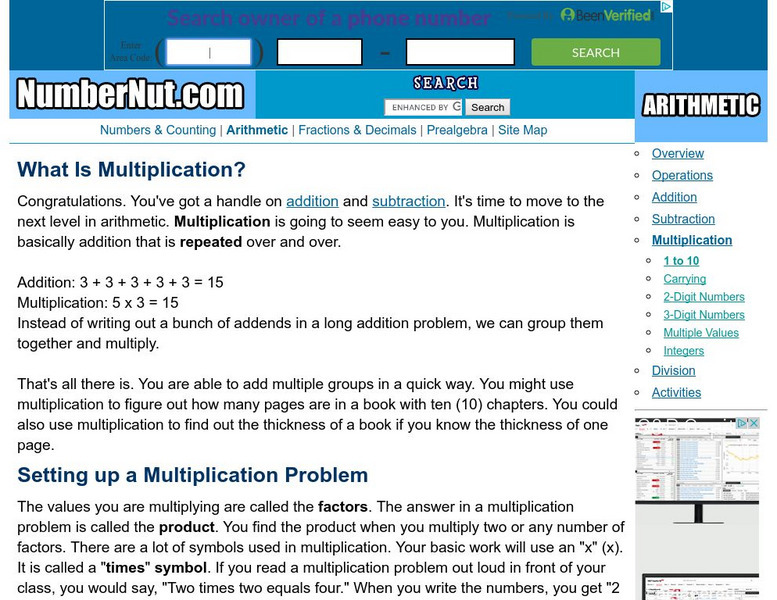Illustrative Mathematics
Numbers in a Multiplication Table
Identifying patterns is a crucial skill for all mathematicians, young and old. Explore the multiplication table with your class, using patterns and symmetry to teach about square numbers, prime numbers, and the commutative and identity...
Curated OER
Patterns in the Multiplication Table
Explore patterns in the multiplication table in order to deepen your third graders' understanding of this essential skill. Implement this activity as a whole-class lesson, allowing students to work in pairs or small groups to support...
5280 Math
Multiplication Table Algebra
Patterns, patterns, everywhere! Young scholars examine the multiplication table to identify patterns. Their exploration leads to an understanding of the difference of squares and sum of cubes by the completion of the algebra project.
Curated OER
Symmetry of the Addition Table
Help your class discover the commutative property of addition with this exploration of the addition table. By folding and coloring the table, a symmetry is found that directs students to an understanding of this crucial mathematical...
Illustrative Mathematics
Identifying Multiples
Administer an activity that fosters a child's understanding of multiples. Young mathematicians are guided to complete three tasks on a multiplication chart. Once they color the boxes with multiples of two, three, and four, learners...
Illustrative Mathematics
Multiples and Common Multiples
Learners are asked to find multiples and common multiples of two numbers. They must take their findings and find a pattern between the numbers and explain their reasoning. Use this resource with The Florist Shop activity in this series...
Illustrative Mathematics
The Locker Game
Here is a learning activity that incorporates a classic puzzle in mathematics. Young mathematicians are guided through a series of statements that describe rounds of pupils opening and closing lockers. The first person opens all 20...
5280 Math
Polygon Polynomials
Patterns in polygons lead to patterns in polynomials. Presented with a series of polygons, individuals create polynomial expressions to represent their patterns. The algebra project consists of nine problems that incorporate polynomial...
Illustrative Mathematics
Complex number patterns
Start off with the definition of the imaginary number i, then have your class practice simplifying expressions involving powers of i and look for patterns. See how the cyclic nature of powers of i translate to sums of powers of i.
Under the Dome
Card House
Mathematics is stronger than a card house. Pupils watch a video of the beginning of the building of a triangular card house. Scholars come up with questions they wonder about from the video and ask for more information to arrive at an...
Illustrative Mathematics
The Stamp Collection
By using language like "half of the stamps," children are exposed to patterns in arithmetic that requires solving a two-step word problem. This type of language opens a new door for transitioning learners toward understanding fractions...
5280 Math
Pythagorean Triples
From Pythagorean triples to the unit circle. Learners use the Pythagorean Theorem to find Pythagorean triples and then relate their work to the unit circle in a fun algebra project. Their discovery that x^2+y^2 is always equal to one on...
Curated OER
K-5 Mathematics Module: Number and Number Sense
Reinforce number sense with a collection of math lessons for kindergarteners through fifth graders. Young mathematicians take part in hands-on activities, learning games, and complete skills-based worksheets to enhance proficiency...
Curated OER
Rainy Day? P.E. Anyway!
If your PE class is faced with bad weather and must stay indoors, try one of these activities to keep them engaged and moving! Activities involve working in teams, identifying sports or parts of the body, coordination practice, and/or...
K-5 Math Teaching Resources
K 5 Math Teaching Resources: Drawing Multiplication Patterns [Pdf]
Students will follow the instructions to explore the multiplication patterns of numbers one through nine.
K-5 Math Teaching Resources
K 5 Math Teaching Resources: Patterns in the Multiplication Table [Pdf]
Students will follow the directions to explore the patterns in a multiplication table.
Beacon Learning Center
Beacon Learning Center: The Nine Pattern
Students can practice multiplication and division facts by learning the nine pattern in this interactive web lesson.
Illustrative Mathematics
Illustrative Mathematics: 3.oa Patterns in the Multiplication Table
The goal is to look for structure and identify patterns in the multiplication table and then try to find the mathematical explanation for this. Aligns with CCSS.Math.Content.3.OA.D.9 Identify arithmetic patterns, and explain them using...
Math Playground
Math Playground: Multiplication Chart
This is an interactive multiplication chart for 0 to 9, 1 to 10, or 1 to 12. Students can use different colors to highlight within the chart for pattern recognition.
Beacon Learning Center
Beacon Learning Center: Hotel 6
Students solve multiplication problems using basic facts and patterns in this interactive web lesson.
K-5 Math Teaching Resources
K 5 Math Teaching Resources: Using Number Patterns to Describe Multiples [Pdf]
An activity to work with patterns. Materials needed:10 x 10 blank and numbered grids and materials to make patterns.
NumberNut
Number Nut: Multiplication: 1 to 10
Demonstrates how to use repeated addition to multiply single-digit numbers, how to recognize number patterns that can help with understanding, as well as how to use a multiplication table for facts that need to be memorized. Includes...
Instituto Latinoamericano de la Comunicacion Educativa
Red Escolar: Brincos Y Numeros
In Spanish. Find patterns with numbers less than 50. Also there is an activity to introduce the concept of multiplication.
Texas Instruments
Texas Instruments: Skip Counting 2,4,6,8, Who Do We Appreciate?
In this activity, students explore skip counting to enhance their understanding of multiplication and pattern completion. They investigate how to complete patterns using the number line.
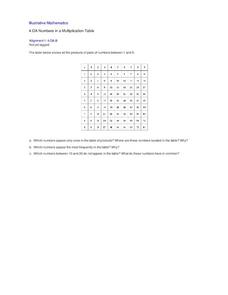



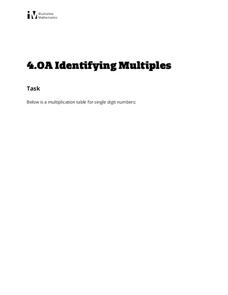
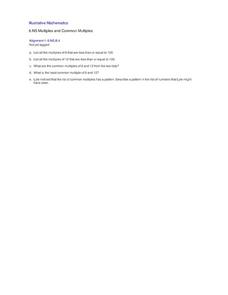

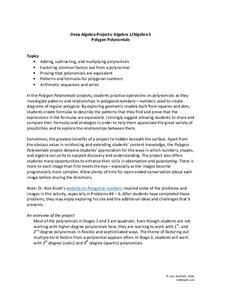



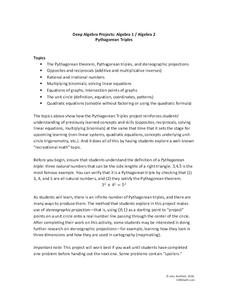
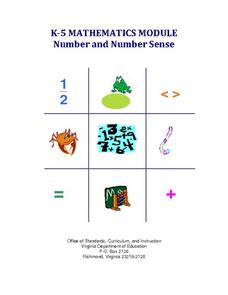

![K 5 Math Teaching Resources: Drawing Multiplication Patterns [Pdf] Activity K 5 Math Teaching Resources: Drawing Multiplication Patterns [Pdf] Activity](https://d15y2dacu3jp90.cloudfront.net/images/attachment_defaults/resource/large/FPO-knovation.png)




